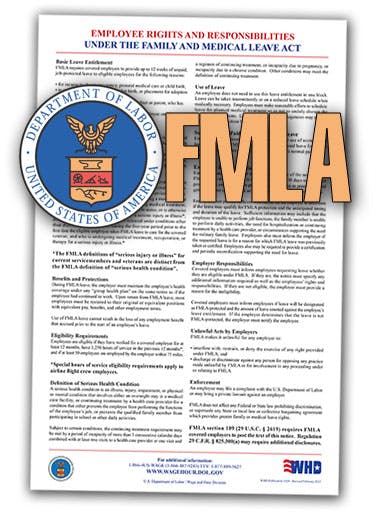By Eric B. Meyer
Now, let’s talk about notice under the Family and Medical Leave Act.
Specifically, in those situations in which an employee doesn’t use the letters F-M-L-A, what can that employee say or do to still qualify for leave?
Well, in Festerman v. County of Wayne, a police officer left work one day with chest pains and shortness of breath and was transported to the hospital. Five days later, he returned to work and submitted an incident report, which was passed along to both HR and Benefits Administration.
The following day (so, six days after the initial incident), the police officer received a doctor’s note, which read, “Patient is advised to limit working hours to 8 hrs/day.” Three days after that, the police officer provided that note to his supervisor.
How much notice is enough?
Viewing the trip to the hospital and the doctor’s note in isolation, neither would be enough to trigger the FMLA’s protections. However, as the Cincinnati-based Sixth Circuit Court of Appeals noted, it’s the big picture that counts:
[T]he doctor’s note submitted by Festerman, in isolation, may not have provided sufficient notice to Wayne County of a qualifying condition under the FMLA. The circumstances surrounding Festerman’s initial qualifying leave, however, provided additional context to the doctor’s note and are evidence that Festerman’s superiors were aware of his potential FMLA-qualifying condition….Given Wayne County’s knowledge of a serious health-related incident that occurred in the workplace and the doctor’s note which advises that Festerman’s workday should be limited to eight hours per day, a reasonable jury could find that Festerman provided sufficient notice to Wayne County of a FMLA-qualifying serious health condition.”
Usual and customary notice
Now, some of you — the dorkiest — may be thinking, “Meyer, didn’t the Sixth Circuit consider the FMLA regulations, specifically, 29 C.F.R. § 825.302(d), which provides that, “An employer may require an employee to comply with the employer’s usual and customary notice and procedural requirements for requesting leave?” Therefore, an employer may require compliance with the employer’s ordinary custom.
Well, you’re right. You’re also a total FMLA nerd.
But, as the court further noted, “[n]othing in the regulation, however, suggests that an employee must adhere to an official written policy to provide sufficient notice under the FMLA when a different unwritten custom is typically followed.”
Employer takeaways
So, let’s put it all together with some employer takeaways.
- Have an official written policy on notice and procedural requirements for requesting FMLA leave.
- Train your employees and managers on the policy.
- Stick to the policy.
This was originally published on Eric B. Meyer’s blog, The Employer Handbook.
